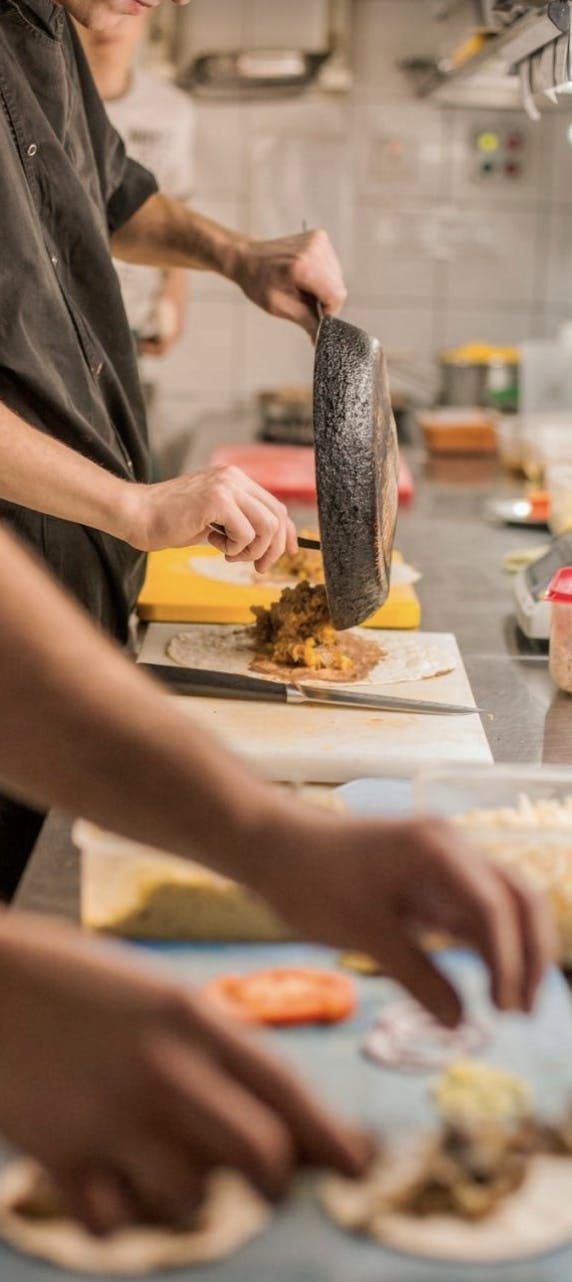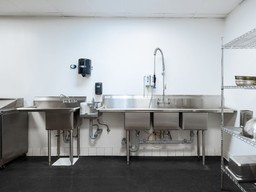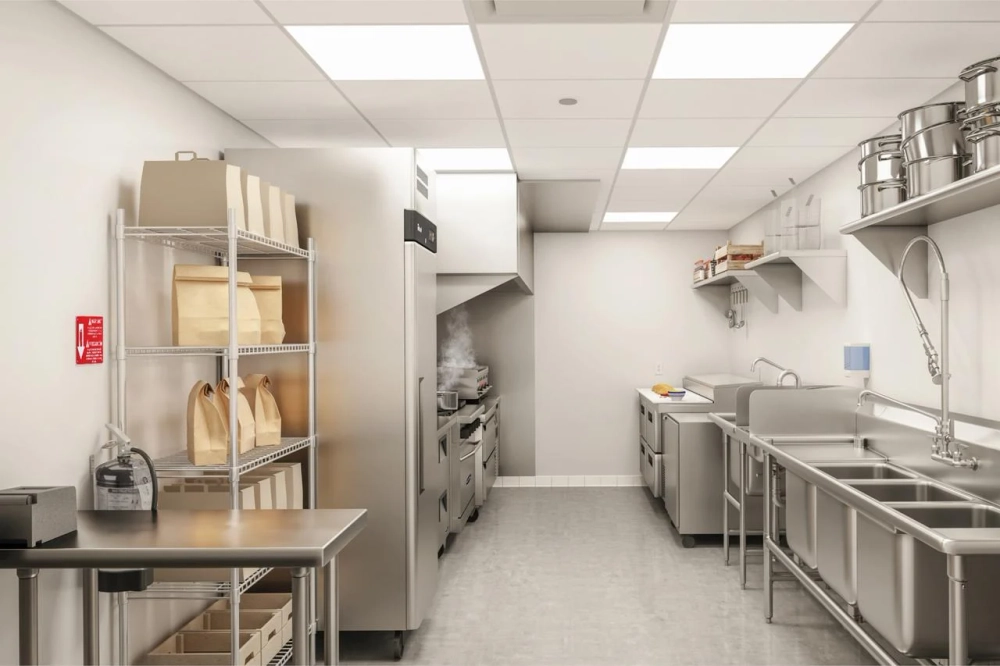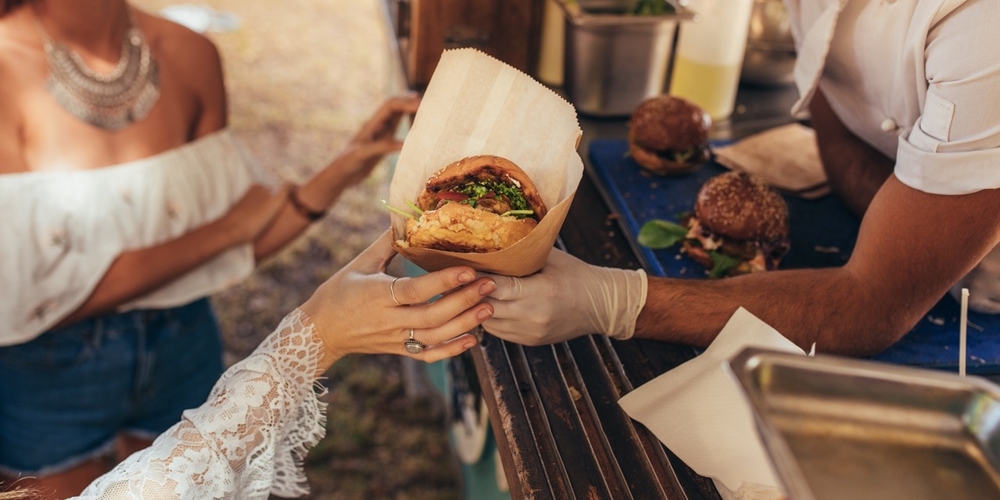How Much Does It Cost to Start a Restaurant Business?
Table of Contents
CloudKitchens
How many tacos can be delivered from a 1000sqft restaurant?
The same amount as a 200sqft ghost kitchen.
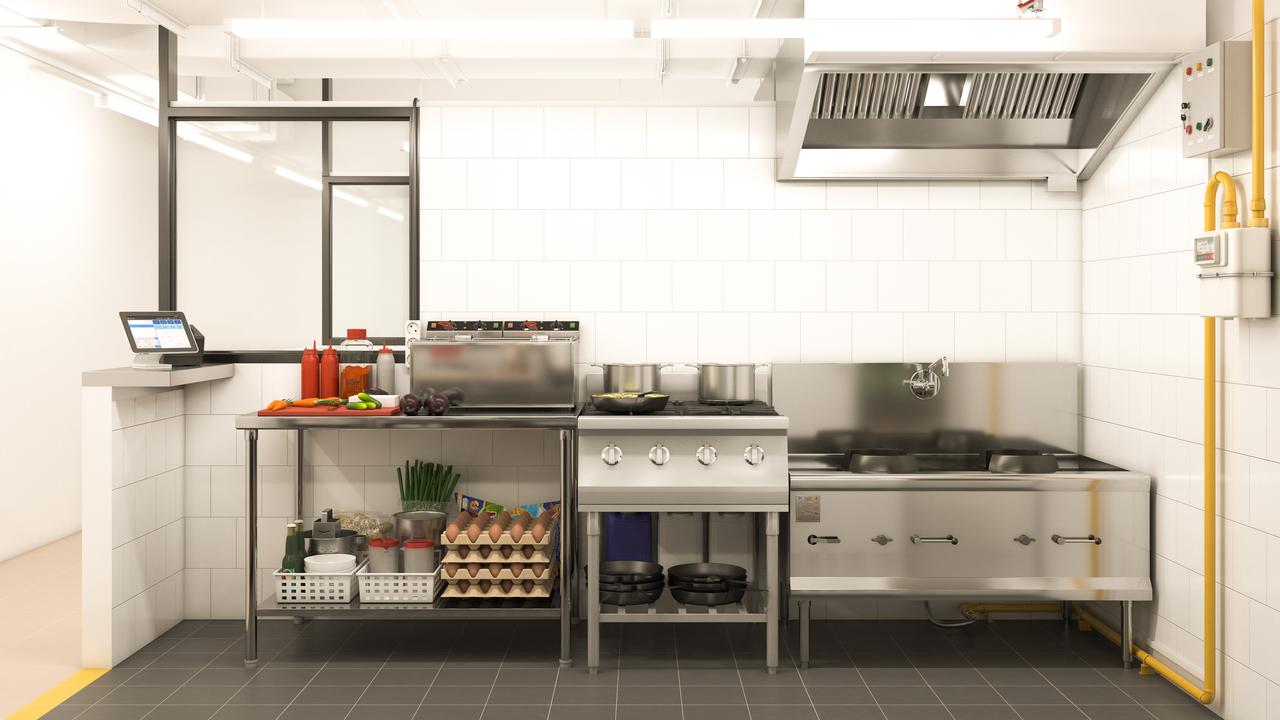
If you’re looking into how to start a restaurant, you likely have many questions. Among the more urgent is cost. What are the restaurant startup costs and the expenses associated with being a new restaurant owner?
The answer isn’t straightforward and varies based on a number of factors, such as the restaurant type you want to open, where you want to operate, and how large a restaurant you are planning. Do you want in-restaurant dining or exclusively takeout and delivery services? Fast food or fine dining? Narrowing down these elements and understanding the expenses of opening and running a restaurant will help you navigate how to increase restaurant sales.
Restaurant startup costs vary, ranging from $175,500 to $750,000. If the high startup costs feel overwhelming, don’t get discouraged. We’ll cover how much it costs to open your own restaurant and how an innovative strategy, like the ghost kitchen method, helps drastically reduce these costs.
Breakdown of Costs for Starting a Restaurant:
- Monthly Rent/Lease
- Utility
- Labor Costs
- Food Costs
- Technology
- Marketing
- Licenses and Permits
- Other costs
1. Monthly Rent/Lease
Every restaurant needs space, and the cost of that space varies based on your goals. If you plan to open a large restaurant with a spacious dining room, the cost will be much higher than a small restaurant with plans to offer pickup and delivery-only options. The average restaurant rent makes up around 5% to 10% of a restaurant’s monthly costs. One survey found that the median rent of a restaurant is $5,000 per month.
If you’re looking to save money in this area, we’re diving into how ghost kitchens drastically reduce the amount of space required, and therefore the rent you pay, helping you turn a profit faster.
2. Utility
Restaurants spend approximately 3% to 5% of overall operating costs on utilities, with an average of $2.90 per square foot on electricity and $0.85 per square foot on natural gas annually.
During the construction phase of your restaurant, even if the establishment is not yet fully functional, it’s essential to ensure continuous operation of utilities like gas, water, and electricity. The costs associated with restaurant utilities can accumulate rapidly. For a restaurant covering an area of 4,000-4,500 square feet, anticipate an average monthly utility expense ranging from $1,000 to $1,200.
3. Labor costs
Labor makes up a large slice of your operating costs and includes hourly wages, vacation pay, sick days, employee benefits, payroll tax, and more.
Restaurants attempt to keep labor costs at around 25% to 30%. Quick-service restaurants are at the lower end of the range, while casual dining is at the upper end. Curious how you can calculate your labor cost percentage?
It’s as simple as taking your total labor costs for a period divided by the total sales for that same period, multiplied by 100.
Let’s take a look at an example. Your November labor costs were $20,000, and total monthly gross sales were $65,000. The labor cost percentage is $20,000 divided by $65,000, multiplied by 100. This gives you about 31%, which is just slightly above the upper limit of 30%.
Market conditions and emerging regulations play into your labor cost. Additionally, labor shortages have the potential to drive up these costs as well. One study found that 7 in 10 restaurants struggle with filling positions due to a labor shortage.
4. Food costs
Food cost weighs heavily on your operating expenses. It generally makes up around 28% to 35% of a restaurant’s ongoing expenses. The cost can also differ based on what type of menu items you plan to serve. For example, a steakhouse may run up to 40% in food costs, while an Italian restaurant may run closer to 28%.
It’s important to consider how many profit dollars your menu items will generate for your food business. For example, a menu item may have 35% food costs but still generate more profit than a 28% food cost menu item because of its popularity and volume sold. As a result, it’s important to consider promoting items based on their “gross profit contribution” rather than on low food costs alone. Depending on your type of restaurant or food business, alcohol, and alcoholic beverages may be crucial to include on your menu to maximize revenue; however, the proper steps must be taken to obtain a liquor license.
Food costs are volatile. A bad weather event like a hurricane or other natural disaster can quickly throw everything into flux. You’re also at the mercy of trends driving up demand and, therefore, costs. If avocados, for example, become a hot item on the market, you are vulnerable to supply-and-demand issues, which may drive up food costs.
Vendor relationships are also crucial as you launch and maintain your restaurant business. One study found that 4 in 10 restaurant owners actively negotiate with vendors to keep their food costs low. Consider this as you build vendor relationships and plan for the future.
And finally, be mindful of food waste. A difficult balance exists between not having enough of an item and having too much. One study found that 58% of restaurants struggle to manage their inventory properly and end up ordering too much food, resulting in wasting money and food.
5. Technology
A few decades ago, technology played a small role in the restaurant industry, but now it’s the backbone of the customer experience which aids in the economic development of your business. Without the right technology, you risk creating subpar experiences for customers, which can quickly reduce profits.
Consider the following when planning for technology:
- Employee scheduling system: Nearly one-fourth of restaurants say they spend 3 or more hours working on employee schedules, which is why a scheduling system can be an essential tool.
- Point-of-sale (POS) system: A good POS system is important to provide a seamless customer experience. What’s more, is that 70% of restaurant owners report the ability to gain insights from their POS system helps grow their profits.
- A single platform and tablet for deliveries: If you offer delivery service, your technology must connect seamlessly with multiple vendors to create a single workflow. Read more at https://tryotter.com/
- Contactless-payment: Contactless payment, whether using debit or credit, has been a staple in restaurant technology, offering options like tap, dip, swipe, or insert. However, the landscape shifted during COVID-19. A survey revealed that 34% of customers now consider contactless/mobile payment crucial for their dining experiences. Consequently, contactless payment has rapidly evolved, becoming the standard in most restaurants.
- Self-ordering Kiosk: Self-ordering kiosks enhance efficiency, ensure order accuracy, cut labor costs, encourage customization, improve customer experience, enable data collection, and aid social distancing measures. In essence, self-ordering kiosks contribute to operational efficiency, cost-effectiveness, and an enhanced overall dining experience for customers.
Find out more about the seven top reasons kitchen management systems are worth your consideration.
An additional aspect of technology expenses involves the recurring subscription or commission fees paid monthly to platforms like Uber Eats, Doordash, Grubhub, and others. These fees allow restaurants to list their menus and facilitate orders on these platforms.
The cost of your technology and POS system will vary based on what tools you decide to use. Regardless, select technologies that give you access to insights. These insights will enable you to get an in-depth view of the many factors that influence sales.
6. Marketing
Elevating your restaurant from obscurity to a beloved establishment requires strategic marketing. Managing marketing in-house can be cost-effective, utilizing existing staff for tasks like social media promotion. Alternatively, hiring a professional marketing agency, while more expensive, can yield comprehensive results. The extent of marketing expenses hinges on your restaurant type.
Franchised locations may benefit from corporate-supported advertising, while new ventures in competitive markets might necessitate substantial promotional efforts.
For upscale establishments, collaborating with a PR agency or gaining media coverage could be vital. Harnessing social media and progressing to email marketing as your customer base grows are effective, scalable strategies. Ultimately, marketing costs vary based on your restaurant’s concept, competition, and unique factors discernible as the owner.
Typically, restaurants should allocate around 3-6% of their sales to marketing. More investment is needed during the initial years when word-of-mouth and branding build up; investment can be reallocated.
7. Licenses & Permits
The cost of a business license ranges from $75 to $7,000 or more, depending on your location and local requirements. The initial cost of a food-handling service license is around $100 to $1,000, and a liquor license costs around $300 to $14,000, depending on state regulations.
- Get a Business License
- Apply for EIN
- Get a Certificate of Occupancy (COE)
- Apply Food Service License
- Obtain Food Handling Permit for the staff
- Liquor License
Read more about the 6 Licenses and Permits needed to open a restaurant here.
8. Other costs to consider
As you take inventory of the potential costs of opening your restaurant, there are a few more categories to consider.
- Décor and remodeling costs: Even if you lease a commercial space that was previously a restaurant, you will likely have some remodeling costs. Expect to spend anywhere from $5,000 to $100,000 or more.
- Kitchen equipment: The cost of kitchen equipment will depend on whether you decide to lease or purchase the equipment. You’ll also need to purchase necessities such as dishes, glasses, linens, and other items for in-restaurant dining. A laundry service may also be required to clean your restaurant items.
- Sanitation costs: The cleanliness of your restaurant as a restaurant owner is vital, especially when it comes to food safety. Having a clean workspace is crucial in running a successful restaurant, so you may want to consider having a cleaning crew during the night. On average this might cost around 90$ an hour for a small business, all the way up to almost $1000 for larger restaurants.
If you want to reduce some of the costs of opening a restaurant, you might consider an alternative business strategy. A ghost kitchen allows you to eliminate costs associated with in-house dining and maximize efficiency for a quicker return on investment.
Ghost kitchen versus traditional kitchen
| Factors | Traditional Restaurant | Ghost Kitchen |
|---|---|---|
| Real estate size | ~2100 sq ft | ~200 sq ft* |
| Investment | ~ USD 1m | ~USD 30k* |
| Time to launch | ~52 weeks or more | ~6 weeks* |
| # of staff needed | 25 or more | around 4* |
| Breakeven | ~5 years | ~6 months* |
An alternative to the traditional restaurant startup business model enables you to pursue your business without worrying about high upfront costs. If you haven’t heard of a ghost kitchen, you might wonder what it is, how it works, and if it makes sense for your business. Consider the following.
Brick-and-mortar traditional restaurant
One of the key expenses of opening a brick-and-mortar restaurant is the location. If you don’t have a good location, you miss out on foot traffic and other opportunities that make a successful restaurant. And since you’ll offer in-restaurant dining, you’ll need a large space.
For example, you might have a capital investment of $1 million for a space of 2,000 square feet. At a minimum, you would need 25 employees, and the time required to open the new restaurant could be 52 weeks or longer. In this scenario, the capital investment and risk are high.
Ghost Kitchen
A ghost kitchen does not have in-restaurant dining, so it requires a much smaller space than a brick-and-mortar restaurant. The business operates on a delivery model, which requires a much smaller space to get started. For example, you only need a 200-to-300-square-foot kitchen to get up and running.
Foot traffic isn’t important, so you don’t need to pay a premium for a highly visible space and worry about missing a potential customer, thereby saving on rent costs. Without the need for front-of-house staff, you hire 4 employees who are solely focused on making really good food. With CloudKitchens set in a specific location like a ghost kitchen in Miami, Austin, or San Francisco, this plan takes as little as 4 weeks to set up, and you get a return on your investment much more quickly.
Moving forward with greater success
Opening a new restaurant requires many decisions, and one of the most important is your business model. The restaurant industry is at a point of rapid transformation. By embracing trends, such as demand for delivery services, you can create a business plan positioned for future success with greater efficiency and lower upfront costs.
CloudKitchens is proud to offer ghost kitchens in Miami, NYC, Chicago, Orlando, Austin, Philadelphia and more. Contact us today to find the location nearest you!
Explore ghost kitchen locations across the US:
- Ghost kitchens in San Francisco
- Ghost kitchens in LA
- Ghost kitchens in NYC
- Ghost Kitchens in Toronto
- Ghost Kitchens in Atlanta
- Ghost Kitchens in Dallas
- Ghost Kitchens in Chicago
- Ghost Kitchens in Denver
- Ghost Kitchens in Miami
| DISCLAIMER: This information is provided for general informational purposes only and the content does not constitute an endorsement. CloudKitchens does not warrant the accuracy or completeness of any information, text, images/graphics, links, or other content contained within the blog content. We recommend that you consult with financial, legal, and business professionals for advice specific to your situation. |
Read more:
- Sales vs Business Development: Which One to Pursue for Ghost Kitchens?
- What are Ghost Kitchens? The definitive guide to Virtual Restaurants
- Ghost Kitchen or Virtual Kitchen: How to Choose the Right Model for Your Business
- How to Start a Ghost Kitchen: Essential Tips for Success
- Starting a Pop-up Restaurant: A Comprehensive Guide
- How to Start a Restaurant Business: 6 Steps For Success
- Start your Virtual Restaurant: The ultimate success blueprint
Sources
How Much Does it Cost to Open a Restaurant? https://www.restaurantowner.com/public/Survey-How-Much-Does-it-Cost-to-Open-a-Restaurant.cfm
Restaurant Accounting: For Profit’s Sake,
Inventory Your Food Cost! http://www.restaurantreport.com/features/ft_inventory.html
Restaurant Startup Costs: The Real Cost of Opening and Operating a Restaurant. https://upserve.com/restaurant-insider/how-much-does-it-cost-to-open-a-restaurant/
2019 Report: State of the Restaurant Industry. https://www.touchbistro.com/blog/restaurant-industry-report-2019/
How To Calculate Labor Costs: Key Metrics For Restaurants. https://www.restaurant365.com/blog/how-to-calculate-restaurant-labor-cost/
Past Industry Reports. https://www.touchbistro.com/blog/state-of-full-service-restaurants-in-2019/
Restaurant Occupancy Cost. https://www.restaurantowner.com/public/Survey-Restaurant-Occupancy-Cost.cfm
More insights & stories
There’s more where that came from.
Get in the know and check out our additional insights
